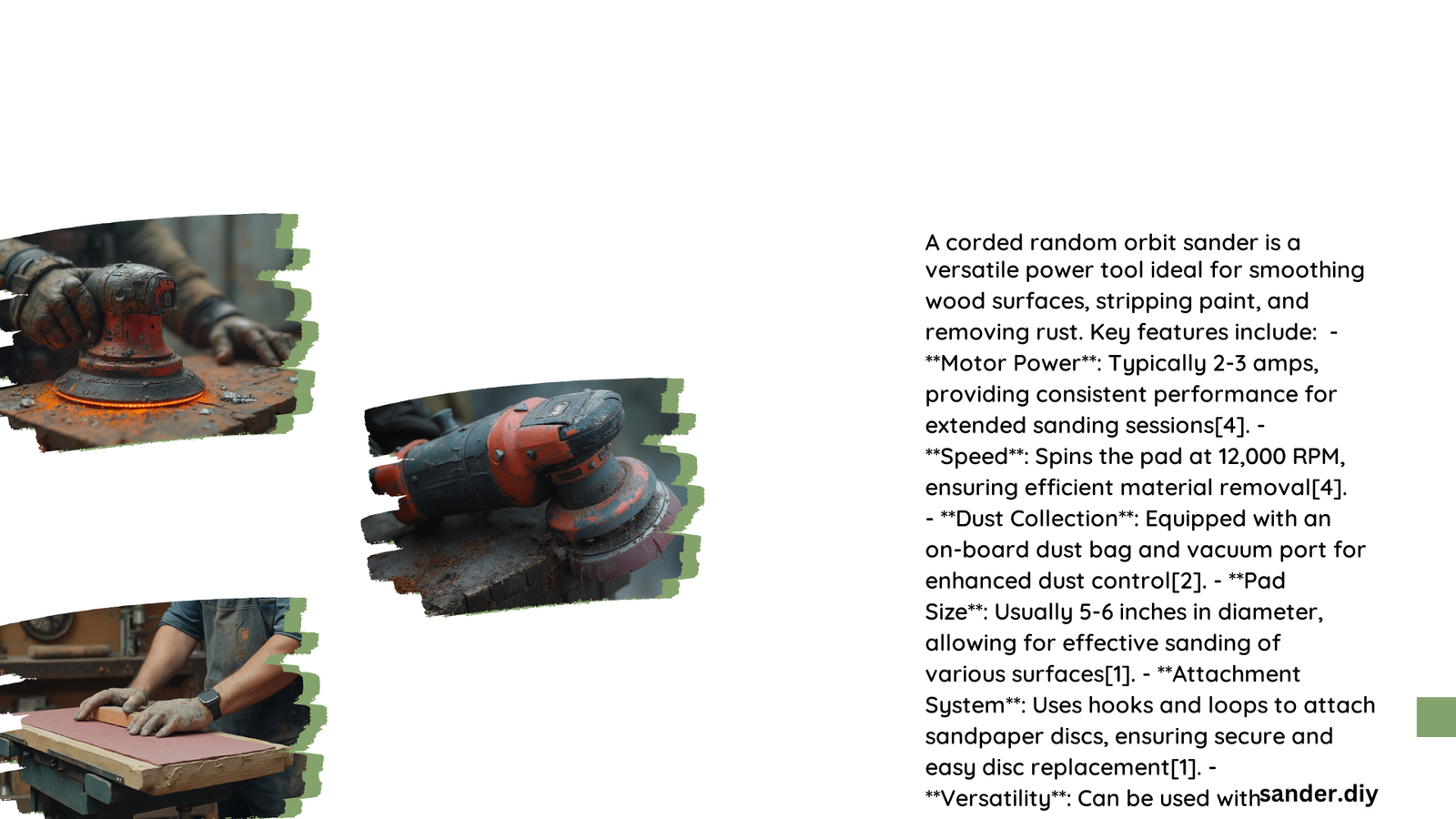A random orbit sander corded is an essential power tool for woodworkers, DIY enthusiasts, and professionals seeking precise and smooth surface finishing. These versatile sanders combine rotational and orbital movements to prevent swirl marks, offering superior sanding performance across various materials like wood, metal, and composite surfaces. With powerful electric motors and advanced dust collection systems, corded random orbit sanders provide consistent power and exceptional control for achieving flawless results.
What Makes a Random Orbit Sander Corded Unique?
Why Choose a Corded Random Orbit Sander?
Corded random orbit sanders offer several advantages over their cordless counterparts:
- Consistent Power: Uninterrupted electrical supply ensures constant performance
- Higher Amperage: Typically range from 2.5 to 6.5 amps for demanding tasks
- Cost-Effective: Generally less expensive than cordless models
- No Battery Limitations: No runtime restrictions or battery replacement costs
How Do Corded Random Orbit Sanders Work?
| Component | Function |
|---|---|
| Electric Motor | Generates rotational and orbital movements |
| Sanding Pad | 5-inch diameter for broad surface coverage |
| Variable Speed Control | Adjusts oscillations from 3,300 to 12,000 OPM |
| Dust Collection System | Connects to vacuum for clean workspace |
Top Corded Random Orbit Sanders Compared

Bosch GET65-5N: Professional-Grade Performance
- Motor Power: 6.5 amps
- Orbit Diameter: 5 inches
- Speed Range: 3,300 to 7,800 OPM
- Key Features:
- Turbo mode for aggressive material removal
- Multiple hand positions
- Excellent dust collection
DeWalt DWE6423K: Compact Precision
- Motor Power: 3 amps
- Orbit Diameter: 5 inches
- Speed Range: 8,000 to 12,000 OPM
- Highlights:
- Low-profile design
- Reduced vibration
- One-handed dust collection system
How to Maintain Your Corded Random Orbit Sander?
Essential Maintenance Practices
- Regular pad replacement
- Clean dust collection system
- Lubricate moving parts
- Inspect power cord for damage
- Store in dry, cool environment
Solving Common User Challenges
Addressing Power and Performance Issues
- Vibration Control: Choose sanders with counterweight systems
- Dust Management: Use compatible vacuum adapters
- Cord Length Limitations: Invest in high-quality extension cords
Expert Buying Recommendations
What to Consider Before Purchase
- Project Requirements: Match sander power to specific tasks
- Ergonomics: Evaluate handle design and weight
- Budget: Balance quality and cost
- Warranty: Check manufacturer support
Pro Tips for Optimal Sanding
Techniques for Best Results
- Start with coarse-grit sandpaper
- Move sander continuously to prevent gouging
- Apply consistent, moderate pressure
- Use appropriate speed settings for material
Safety Precautions
Protecting Yourself While Sanding
- Wear safety glasses
- Use dust mask
- Ensure proper ventilation
- Disconnect power when changing accessories
Conclusion
Selecting the right corded random orbit sander involves understanding your specific needs, evaluating tool features, and considering long-term performance. By focusing on key aspects like power, ergonomics, and dust collection, you can find a reliable tool that delivers professional-quality results.
